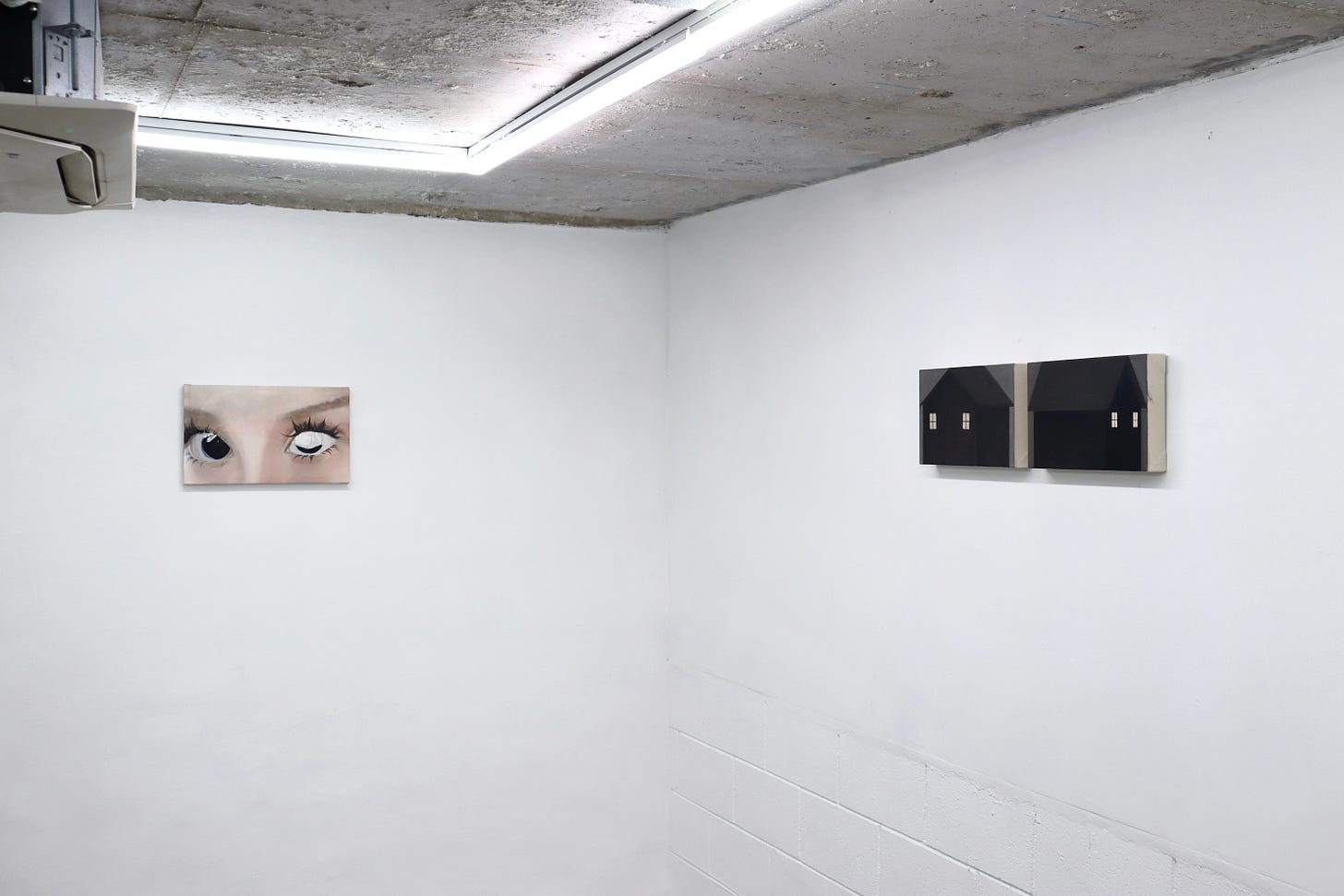Exhibition Text for "Real World"
A couple of months ago, I was asked to write an exhibition text for a group show titled “Real World” for the artists Jisoo You, Daniel Zeballos and Naomi Hawksley. This show ran from Jun 15-30, 2024 at White Noise Gallery in Seoul, South Korea. Thank you Jisoo for inviting me to write this introduction.

Our moron grade school teachers would once condescend to us: “you’re not gonna like the real world!”
What is this “real world”? Of disappointments, layoffs, sudden deaths and more sudden expenses? These educators would use their own suffering as a cudgel to police their still bright-eyed students, more often out of resentment than tough love.
This “real world” of the adults is the world of the pre-experienced. This is a bad environment for art. Art requires fresh eyes, not ones which have “seen it all.” Those burdened by the prejudice of “the way things work,” are bad art viewers.
Yet, the works in this show seek to make something of reality’s bad material. They take thoroughly ubiquitous and supposedly pre-digested images and give expression to their actual mystery. These are works still in touch with the subjectivity of adolescence, which is not one totally naïve to the “real world,” but which still struggles against its flimsy reality principle.
Frequently the images present in this work remind one of what might be found in the margins of a primary school student’s notebook. Eyes, horses, hands, houses and clock faces. They’re a glimpse of the silent years of practice the artists underwent as adolescents, where school’s dumb repetition gave way to the secret illumination at hand when an image emerges from discreet pencil marks.
In Daniel Zeballos’ “Citizen Eco,” the result of this kind of practice is transformed into the ancient accumulation of magical experience, precise execution of magical images transforming over time into a kind of shorthand.
The meaning of these old runes is lost to time, but the symbols continue to be repeated and embellished. In the ancient world this embellishment was in gold leaf, for Zeballos it is silverpoint. The vague memory of the image’s significance echoes in the value of the materials the apprentice engraves it on. Drawing the clock face was once the spell to make time accelerate, for class to end. That the school bell rings eventually is proof of the magic’s continued efficacy.
Naomi Hawksley’s work recalls catching a glimpse of what’s written on the next sheet of one’s notebook, as shadows shimmer through layers of transparency paper in her drawings. What’s given the most clear outline are the skeletons in one of her works.
Her skeletons do not evoke death, but rather instructional models hanging in a science lab. Her other figures of horses, adolescent girls and animal stables which suggest fantasies of polymorphous perversity recede behind layers of tracing paper. It is the comportment which can render the object of our most morbid imagination — death — into a thing for cool reflection which grants these bones the most solid line-work. It’s this subjectivity which has become the most “real.”
Where Hawksley’s work is striking for its interiority, Jisoo You’s work totally lacks this quality. You’s work, which often revolves around “eyes” — doll eyes, the illuminated windows of a house, car headlights — does not allow itself to submit to the truism that eyes are the window to the soul. The clandestine scribbler does not ponder what life might be like on the inside of the lit-up house, they’re only interested in its rigid membrane. Eyes become nothing but mucous surfaces, their reflectiveness more striking than their translucency.
You’s work takes familiar objects and empties out their insubstantial “substance,” leaving a facade which is blinding in its immediacy. Her work is like a looking glass which gives a peek as to how the artwork’s purposiveness is now read by our tired eyes: with paranoia. “Who is your master little goat?”
What’s excluded when we speak of the real world? If part of the world can be demarcated into a primary section which is “real,” what part of the world is unreal, surreal, extra-real? The “real world” would have us think that there is nothing outside of it, that all is accounted for in its gloomy accumulation. But the “real” world can give no account of imagination, of what is not. It can give no account of that which is born through it, but is not yet actual: those images which flicker up into the minds of those who must live in this “real world.”
The works in this show attempt to give form to the world at its most reified — what our monstrous teachers would categorize as the most “real.” Formally, these works resonate with our shade-like experience: often they choose to not commit themselves to solid contours, favoring wisps which recede into the background on close inspection. Yet when the works allow themselves to solidify into a formation, the viewer is met with something sphinx-like, silent. Can we still encounter this silence — this other world — without crashing into our own intolerance?







